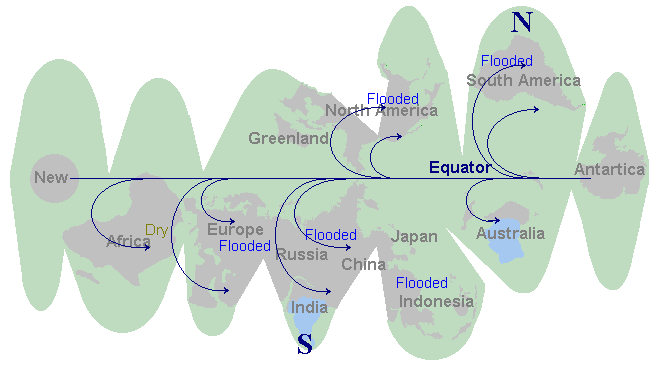
| |
 |
Deserts are caused by a lack of moist air, and this keys on air mass movement, where the air mass has been to allow it to pick up moisture, and what temperature extremes it encounters causing it to drop its moisture. Air currents lift from the equator and curl around toward the poles, circling back toward the equator, as the globe continually turns form east to west under the blanket of air surrounding it. This causes air to curl down along the west coast of the Americas, after having passed over the Pacific, creating the wet coastlines. By the time the air masses have pushed inland, they have already dropped their moisture along the coast. In the case of Africa's vast deserts, the air masses curl around and down through Europe and have already dropped the moisture picked up over the northern Atlantic on Europe, little left for northern Africa. When over large continents, like the Gobi deserts of China, the jet stream is either moist or dry, depending upon what it passed over recently. An air mass curling back from the polar region over Siberia is cold, causing any moist air inland or within itself to condense into rain or snow, leaving little in the air by the time the mass reaches the Gobi. In North America, air masses coming from the Coast are dry by the time they have lifted up and over the mountain ranges, but air masses coming down directly from the lake riddled Canadian lands is relatively cool, and when meeting moist air from the Gulf of Mexico creates thunderstorms aplenty. How will this situation change after the shift?
